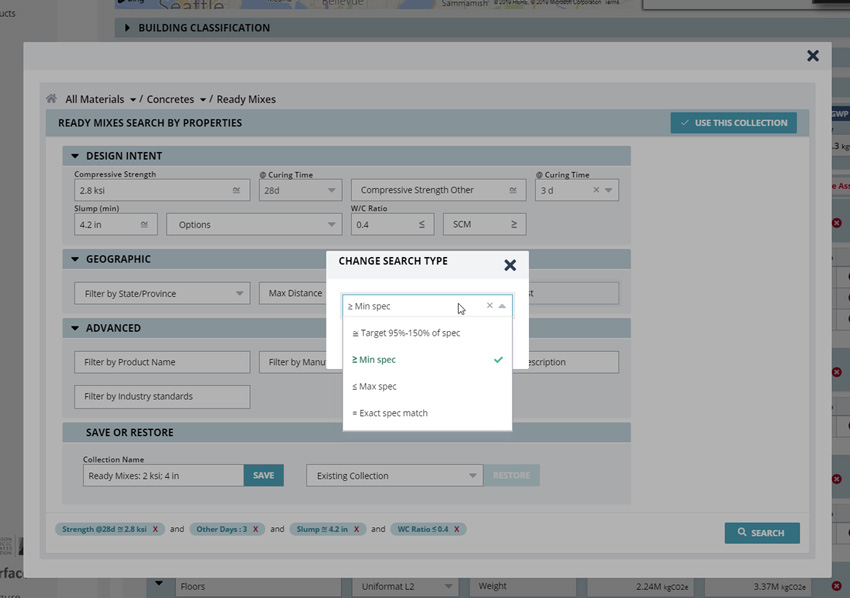Climate, Carbon, and Human Health
Embodied Carbon in Construction Calculator (EC3)
As a first universal step to enable anyone to measure the amount of carbon dioxide embodied in buildings, a new tool is becoming available known as the Embodied Carbon in Construction Calculator (EC3). The companies, Skanska and Microsoft, were the original seed funders for EC3, but it has now moved to the University of Washington’s Carbon Leadership Forum, where it is managed and maintained. As a universal tool, EC3 will be open source, free to use, and accessible to all. It is expected to formally launch in the fourth quarter of 2019.
Stacy Smedley, a director of sustainability at Skanska USA, provides some insight into the background of this effort. “We pioneered the EC3 tool with Microsoft because of the lack of tools and product labels that reveal this information in a completely transparent and easy-to-compare way. materialsCAN, with the help of EC3, is the perfect platform for building awareness and education around an often missing but wildly impactful metric,” she says.
According to the website where EC3 is in beta testing, the online EC3 tool will provide a simple, fairly straightforward way for anyone to estimate the carbon footprint of any building or space (www.buildingtransparency.org). This emerging tool will allow users to search construction materials by global warming potential (GWP) in a public, searchable database based on EPD data. Currently, there are close to 10,000 materials in the database, including concrete, steel, and gypsum. By public release, EC3 will include EPDs for products related to building enclosure and interiors. It is also expected to be able to show the variances among EPDs for products that use differing PCRs due to different iterations of PCR updates.
Reflecting on the ways this tool will empower the design and construction community, Conway says, “Carbon footprint information within our product category has been available for a long time, but it hasn’t been easy for specifiers to understand how to compare it. With so many organizations having climate goals now, we need to prioritize embodied carbon in projects as part of overall carbon-reduction strategies to make a significant and measurable impact on the supply-chain emissions of buildings.”

Source: www.buildingtransparency.org
The embodied carbon construction calculator (EC3) is a new tool coming available to allow anyone involved in building design and construction to estimate the carbon footprint of any project—large, small, renovation, or new construction.









